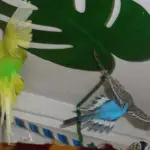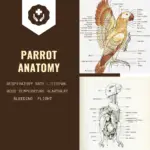
African Grey Species
Psittacus erithacus Erithacus: It is about 36 cm long and weighs 450 to 600 grams. Its feathers are ash gray, it’s tail bright red. He is originally from equatorial Africa.
Psittacus erithacus princeps: It is also called Ghana Gray, West African Grey Parrot, or Boyd Alexander. This parrot looks a lot like the Gray of Gabon but has a smaller build. He is originally from the Island of Principé and Fernando Po in the Gulf of Guinea.
Psittacus erithacus timneh: It is also called African gray Timneh. It is 23 cm long for a weight of 250 to 350 grams. Its feathers are dark charcoal gray and its tail is brown-red. It is much smaller than the Gray of Gabon or Ghana.
It is mainly found in Sierra Leone, Liberia, Guinea, and western Côte d’Ivoire. It is less fearful and more rebellious than the other species present. But he’s also more prone to messing around to get attention and have fun.
Presentation of the Gabonese gray parrot
The Gabonese gray parrot is a bird that, in the wild, inhabits the dense forests of equatorial Africa and appreciates mangroves, gardens, and glades. It measures between 30 and 40cm in length for an adult weight of between 400 and 500g.
In France, it is the best-selling bird among individuals. Its attitude, its longevity, and its reputation as a “talkative” make it a very popular animal.
Unfortunately, in the span of ten years, from 1993 to 2003, more than 350,000 gray parrots from Gabon were captured for illegal export to Europe. These exotic birds are classified as endangered by the IUCN.
Any gray trade in Gabon has been banned since 2018 and any detention of this bird must be declared to the departmental directorate for the protection of populations, in which case you are in violation and may be subject to seizure and trial. verbal by the environmental police.
African Grey Reproduction
It reproduces easily provided there is enough space and a comfortable nesting box. If the aviary is large enough, the gray parrot can raise its young without problems. On the other hand, if the dimensions are too small, they must be provided artificially as soon as the eggs hatch.
Should we declare a Grey from Gabon?
Yes, it is essential to declare the Gray parrot of Gabon to the DDPP.
- Contact the departmental population protection directorate in your department to request the documents to be completed in order to make your declaration.
- Return the completed documents to the DDPP.
- Has it been identified by microchip, at the veterinarian, unless it is wearing a closed seamless ring?
- Declare the bird to the regional directorate for the environment, planning, and housing.
African grey Behavior
The African Grey Parrot excels in educational games and shows a good-natured side. He likes to occupy the mind with simple things like chewing fabric or ropes, grinding softwood.
The smarter a Gabonese gray is, the more likely he is to develop behavioral issues, and this parrot is very intelligent! It can then mutilate itself or remove feathers, as inseparable birds do.
This bird needs to feel secure in the environment in which it operates. You must advise him of your intentions before handling or stroking him and avoid surprising him.
When frightened, the Gabonese gray utters an impressive growl. He can favor the person he prefers to the point of excluding all other members of the family. Socialization work helps to avoid this kind of situation.
Gray is a very gregarious parrot. He needs to feel accepted by the family and to be a full member. It is essential, both for his psychic and physiological balance, to make him grow up with a companion of his kind. When you want to buy a Gabonese gray, you have to think of two birds!
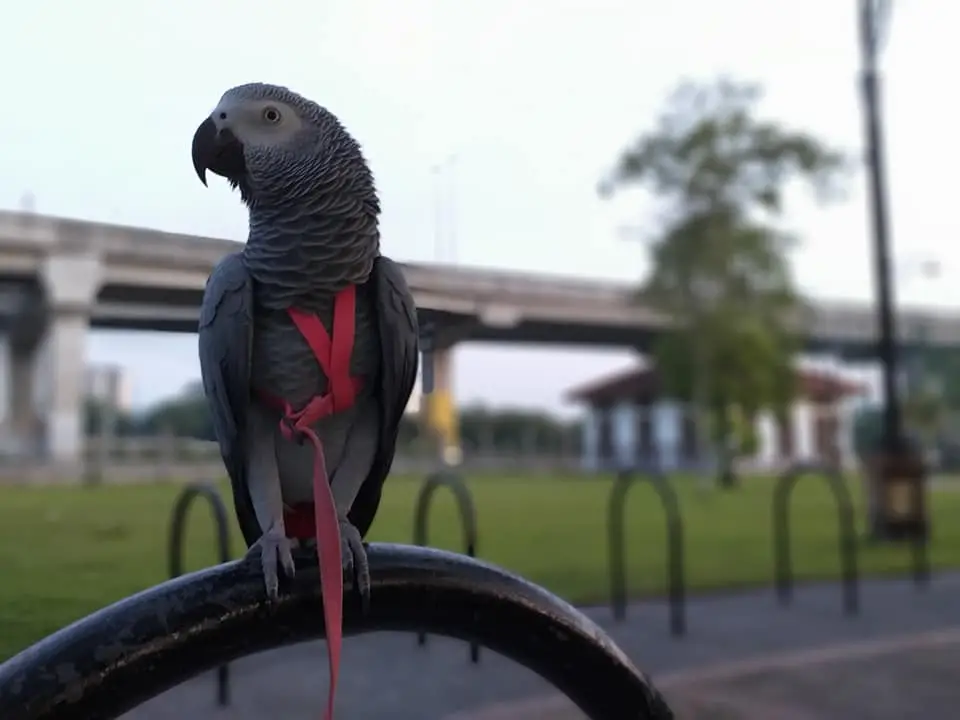
African Grey Parrot Talk
Gabonese gray speaks later than other parrots, around 12-18 months of age. He needs to learn to listen to sounds and to develop his muscles to properly control the formation of sounds.
He may take refuge in silence if you ask him to speak in the presence of other people. This behavior is completely normal and due to his schizoid suspicion.
Gabonese Grays are known for their intelligence and can do as well as 4-year-olds in some tests. Although they do not have vocal cords, they can produce sounds that mimic human language. They can therefore learn to pronounce numbers, which makes it easier to test their ability to count.
African Grey Parrot: Species in Decline (English)
SOURCE:Cornell Lab of Ornithology
Living conditions of gray parrot
The parrot cage is an essential accessory to take into account before your bird arrives. It is important to choose it spacious and adapted to its morphology. The bigger it is, the better.
Choose a cage made from non-toxic materials, ie without lead or zinc. Quality is an important criterion that should not be overlooked. The bars should be vertical and horizontal so that your Gabonese gray can climb or descend easily. At the bottom of the cage, check that there is a grid and/or a removable tray to facilitate cleaning thereof.
It is important to offer him a good living space with a play area inside his cage. The most famous and reputable brand for parrot cages is Montana, but sometimes it is difficult to get them in France.
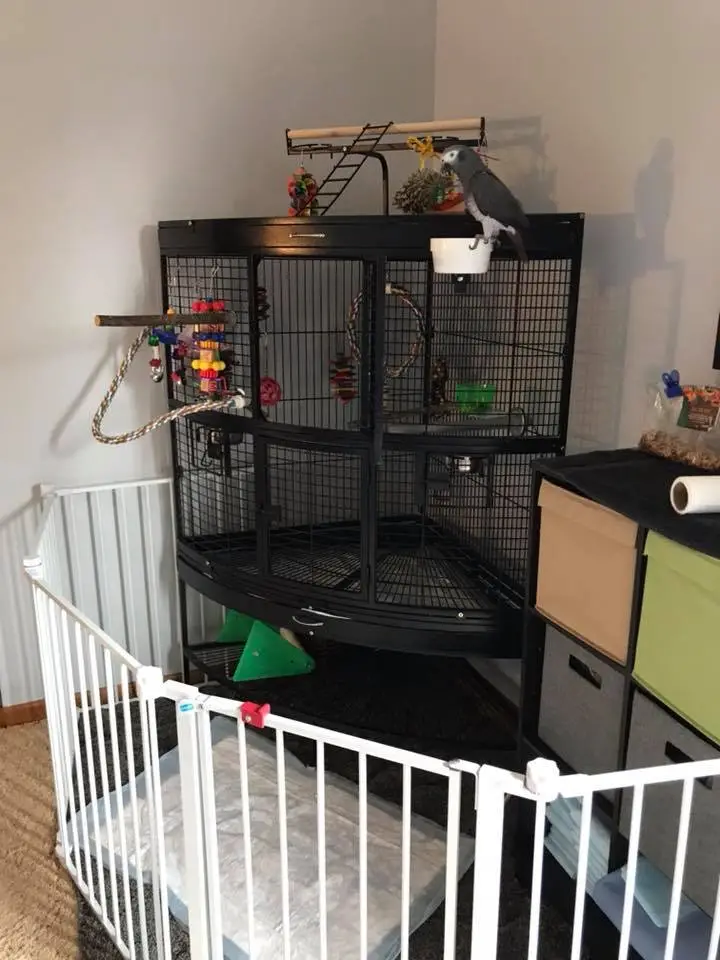
African Grey parrot Cage
Gray needs to see everything that is going on around him to feel safe. For this reason, it is advisable to place his cage against a wall to let him see what is happening in front of him without having to constantly watch his back.
Let the natural light shine on your parrot’s cage as much as possible. It is sometimes necessary to use ultraviolet lamps in less sunny regions to avoid hypocalcemia and pathologies of the plumage.
African Grey Breeding
SOURCE:MARLENE MC’COHEN

African Grey Parrot Health
This bird easily gets used to temperature changes if they happen gradually. Avoid sudden deviations that are too large, for example, if you have to change its room cage.
He needs to interact, play, and have your presence. If you are away, it is important to leave it in its crate. It will not be fulfilled if you are away too often, if you have a busy job or if you are often on the go.
Health Tips
- It is advisable to make a medical visit to your veterinarian once a year.
- Consult a veterinarian specializing in avian medicine and do not hesitate to ask him questions.
- Claw trimming can be done if necessary. Do not file the nails of your Gabonese gray too short. He needs his fingernails to keep himself balanced on a branch.
African Grey Diseases
- Behavioral disorders, in particular aggression problems, lack of fear of humans, and chronic pecking.
- Respiratory pathologies (fungal infections).
- Hypocalcemia syndrome.
- Beak and feather disease (circovirus).
- Congestion and nasal mass.
- The disease of dilation of proventriculi.
African Grey lifespan
African Grey Diet
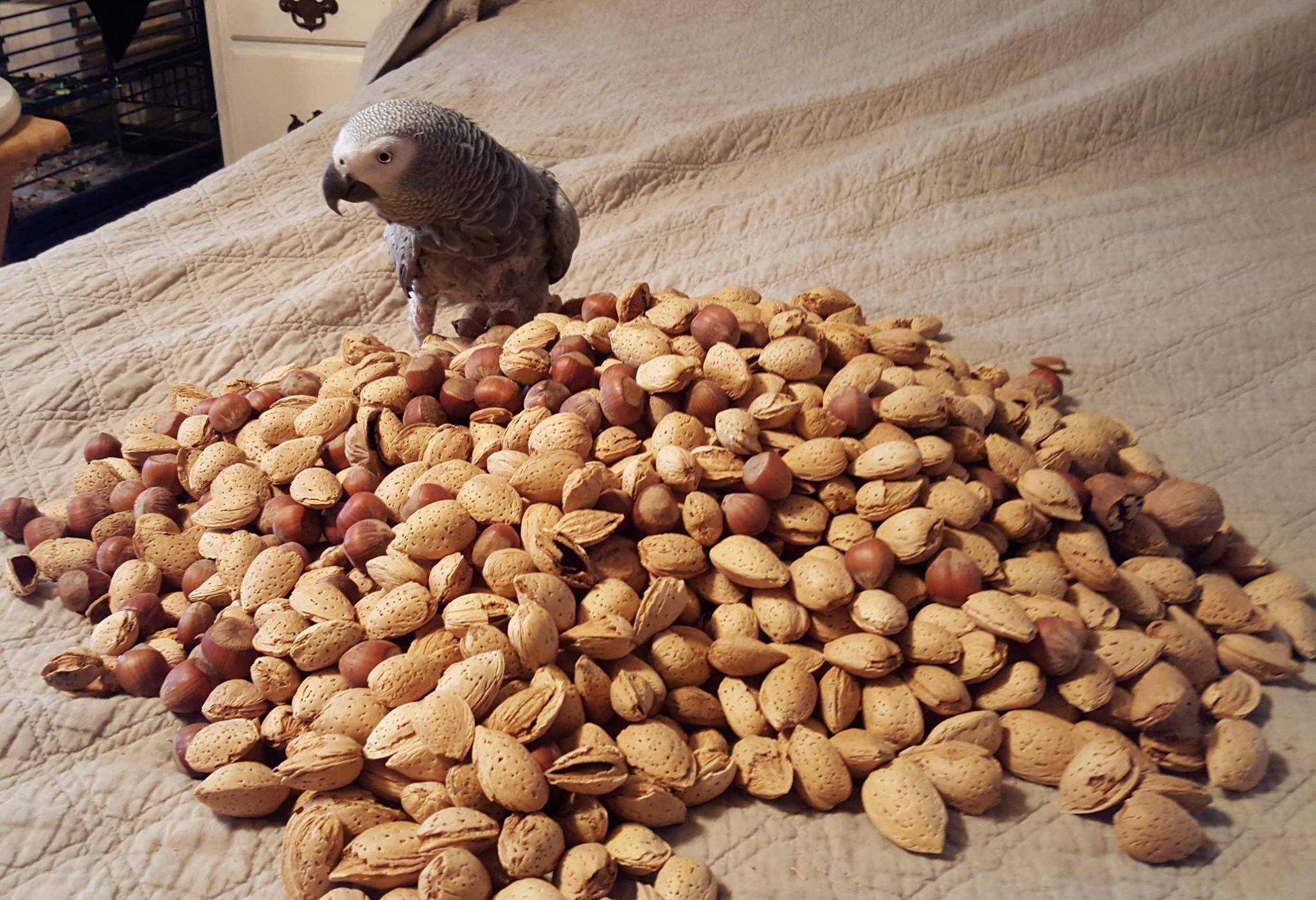
The Gabonese gray is vegetarian and feeds mainly on fruits, seeds (nuts, hazelnuts …), and plants. It is advisable to / provide it with a diet that is closest to its congeners remaining in the wild. Seed-based food is not recommended as the main food.
The seeds can be offered in small quantities to supplement the parrot’s diet. Pellets sold in pet stores provide a complete and balanced ratio, representing at least 75% of the ratio.
Like the Cockatiel or Scarlet Macaw, its diet should be varied. It must be made up for 60% of whole food in granules. You can offer 30% millet in bunches and a Tropimix-type egg mixture.
Keep 10% to bring him fruits, vegetables, a little rice, or pasta. Besides the fact that a diet consisting only of seeds can lead to obesity, your Cockatiel can develop calcium and vitamin deficiencies.
Tropicana and Tropimix mixtures are recognized and of good quality for parrots and parakeets.
Certain foods are deadly for macaws: avocado, parsley, and rhubarb are prohibited. Never give it a human diet based on prepared meals, sauces, sugars, cold meats, bread, meat, spices, milk… Macaws do not eat mealworms or insects.
Fruits and vegetables
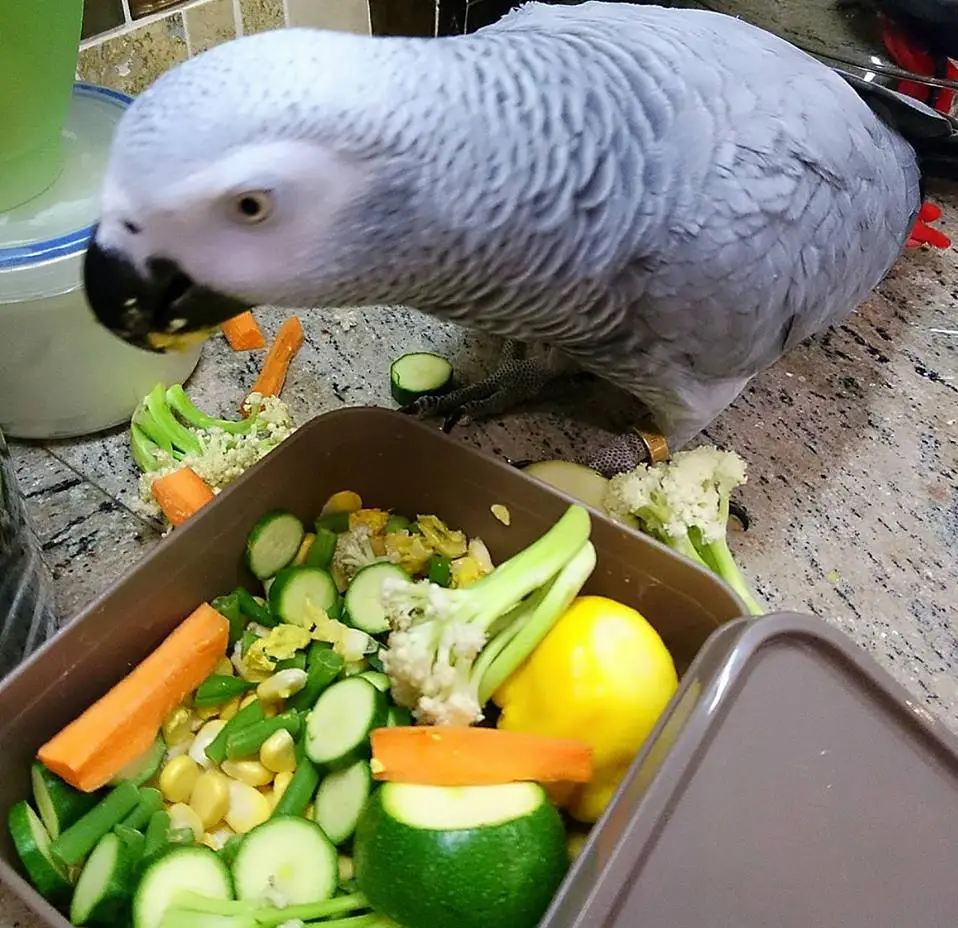
Include fruits and vegetables in his diet at a rate of 20 to 25% of his daily ratio. These foods should be removed if they have not been eaten during the day by your Gabonese gray.
Fruits should be washed and dried, cut into small pieces. Peelings contain a lot of vitamins, so you can feed them to your bird as long as you wash the fruit well.
The choice of fruits and vegetables is vast: apple, carrot, tomato, grapes, kiwi, tangerine, banana, zucchini, strawberry, papayas, pineapple, cherries, raspberries, blueberries …
In short, almost all seasonal fruits and vegetables will do the trick. business! You can incorporate soaked or sprouted seeds into the fruit preparation.
Sweets
Do not overdo the treats: they should not exceed 5% of his daily ratio. Here are some suggestions of treats appreciated by the gray of Gabon :
- Cluster millet.
- Sunflower and Safflower seeds.
- Pumpkin seeds.
- Small pieces of cheese (avoid raw milk cheese) .
- Peanuts and walnuts: cashew, brazil, pecan, hazelnuts, almonds, unsalted pistachios.
- Fruits and vegetables: pineapple, dragon fruit, bananas, apples …
- Hard bread and rusks.
- Unsweetened corn flakes.
- Dried fruits: grapes, bananas, coconut …
Water
The water should be changed daily in order to provide your bird with a bowl of water that is always clean and fresh. Provide a drinking trough outside the cage to prevent your parrot from shedding its droppings inside.
Seed mixes
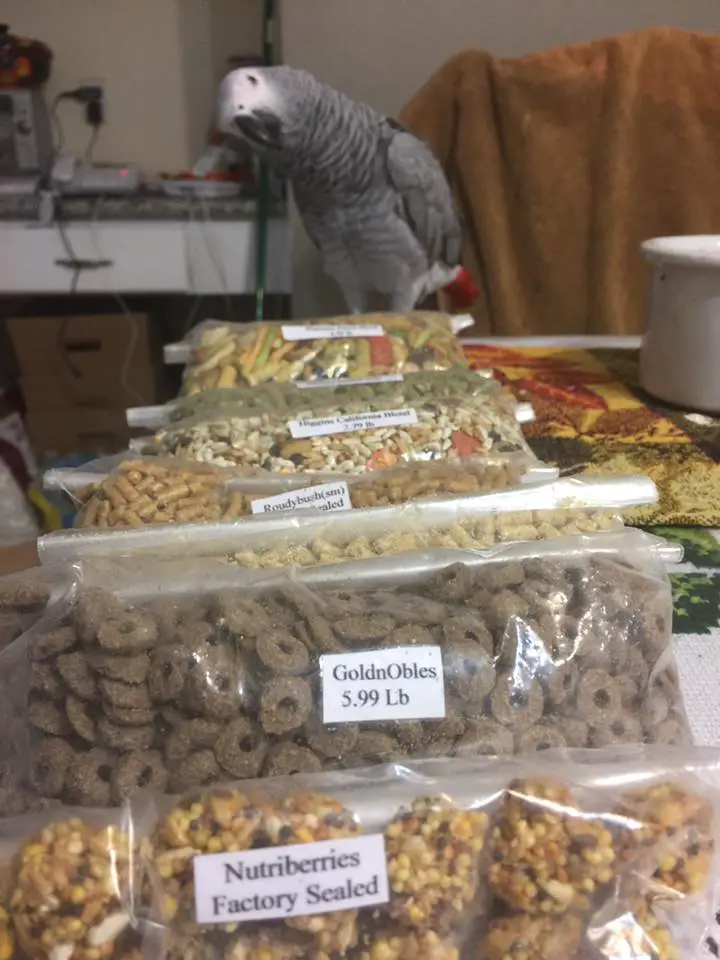
These mixtures are an exclusive mode of feeding and it becomes difficult to modify them. The Gabonese gray can refuse any other food, even if it is a fruit or a seed that it would have found in its natural environment. Food-based only on mixtures of seeds can lead to deficiencies in vitamin A, calcium, iodine.
He can also sort the seeds and remove the beneficial ones. Favor granules to avoid this selective sorting behavior.
If you go for food made from mixed seeds, always choose a high-quality mixture accompanied by fruits and vegetables on a daily basis. Vitamin and mineral supplements are recommended.
African Grey Parrot Price
African Grey Parrot costs at least 800 $. In general, you can acquire this animal for around 1000 $.
African Grey parrot intelligent
SOURCE:PetraGrey

